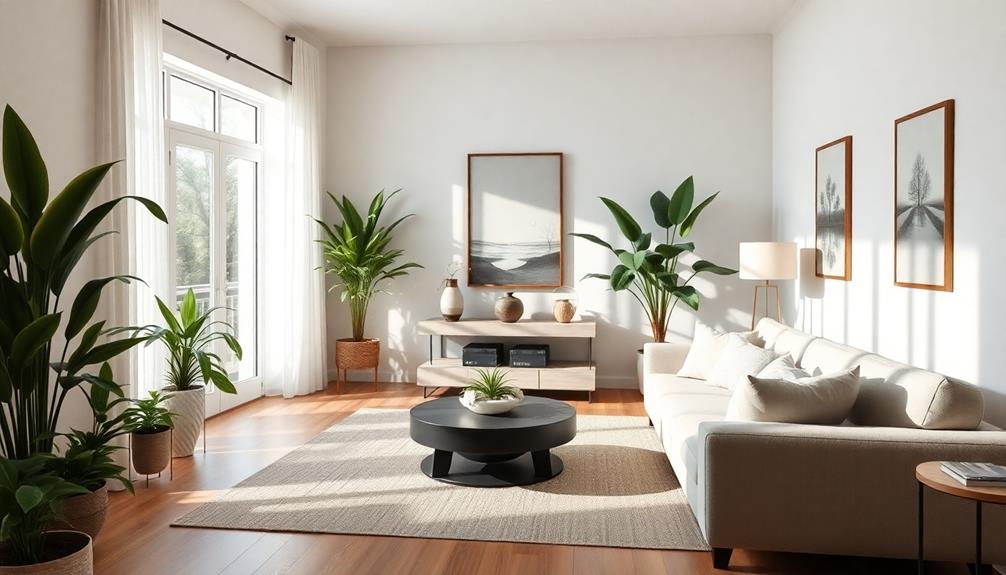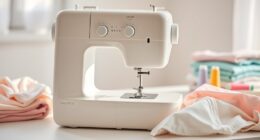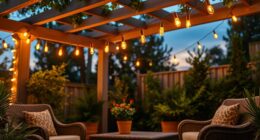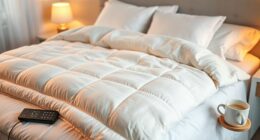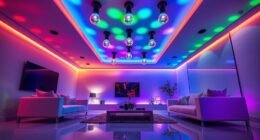As you explore the world of melange fabric, you'll discover a unique textile created by blending different colored fibers, resulting in a visually appealing, multi-tonal appearance. With a rich history dating back to traditional textile production techniques, melange fabric has evolved through mechanized spinning and synthetic fibers. Today, advanced dyeing processes enhance color variation and texture. From casual wear to high-end fashion, melange fabric offers seasonal versatility and sustainable production options. With its advantages in color depth, comfort, and sustainable production, melange fabric is a popular choice. As you continue to uncover the world of melange fabric, you'll find even more about its characteristics, uses, and benefits.
Key Takeaways
- Melange fabric is created by blending different colored fibers, resulting in a heathered, multi-tonal appearance that is visually appealing and versatile.
- The production process involves blending and spinning fibers, which can include up to 60% recycled fibers, and treatments like degreasing and bleaching.
- Melange fabric is suitable for year-round wear, suitable for both summer and winter clothing, and can be composed of fibers like cotton, wool, polyester, or blends.
- The advantages of melange fabric include enhanced color depth, comfort, and improved color fastness, but it also has drawbacks like color variation inconsistencies and durability concerns.
- Melange fabric can be used in various applications, including knit fabrics, activewear, and home decor essentials, and it's essential to follow proper care and maintenance instructions to preserve its texture and color.
What Is Melange Fabric?
As you explore the world of textiles, you might wonder: what exactly is melange fabric, and how does it achieve its distinctive, multi-tonal appearance?
Melange fabric is created by blending different colored fibers during the spinning and dyeing process. This unique technique results in a heathered, multi-tonal appearance that's both visually appealing and versatile.
Cotton melange, for instance, is a popular variation of the fabric type, prized for its softness and durability. During the spinning process, fibers of different hues are carefully blended to create a fabric that's both subtle and striking.
The outcome is a fabric that's perfect for year-round wear, suitable for both summer and winter clothing. Melange fabric offers a unique aesthetic, enhanced texture, and the added benefit of camouflaging stains and wear.
With its diverse range of fiber compositions, including cotton, wool, polyester, and blends, melange fabric is an attractive option for contemporary fashion designers seeking a trendy, high-quality fabric.
History and Evolution
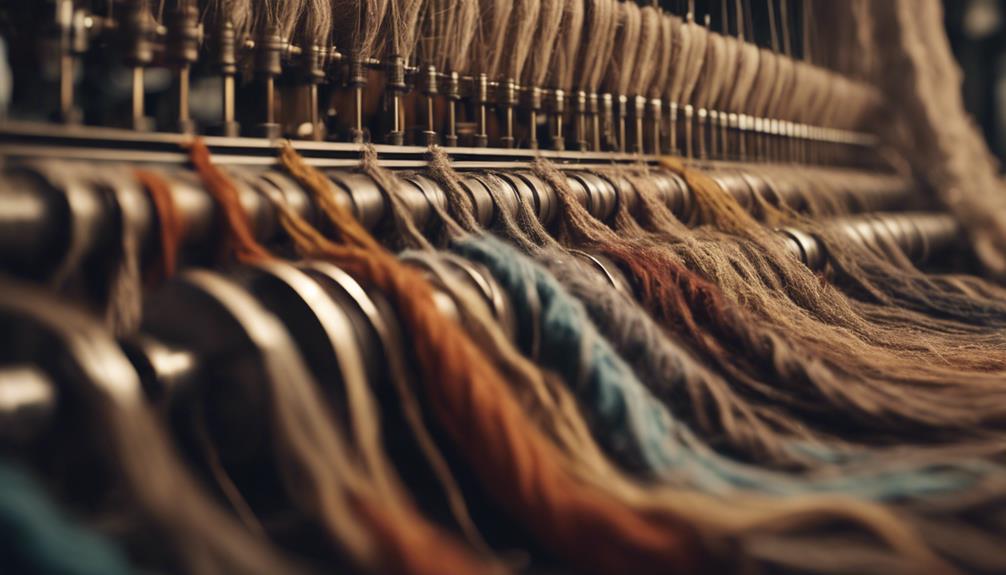
You're probably curious about the origins of melange fabric, and how it evolved into the unique textile as it is perceived today. The history of melange fabric dates back to traditional textile production techniques involving spinning and dyeing. Early weavers experimented with blending colored fibers to achieve a heathered appearance, giving birth to melange fabric.
| Era | Technique | Characteristics |
|---|---|---|
| Traditional | Spinning and dyeing | Heathered appearance |
| Early 20th century | Mechanized spinning | Increased color variation |
| Mid-20th century | Synthetic fibers | Improved texture and durability |
| Late 20th century | Advanced dyeing | Enhanced colorfastness |
| Contemporary | Advanced manufacturing | Widespread use in fashion |
The production of melange fabric has undergone significant transformations over the years, leading to modern methods that enhance color variation and texture. Today, melange fabrics offer a unique heathered look due to the combination of different colored fibers, making it a popular choice in contemporary fashion.
Fabric Production Process

During the production of melange fabric, fibers are blended and spun together to create a unique, heathered appearance, which is then enhanced through various dyeing and treatment processes.
You'll notice that cotton, a popular choice for melange yarn production, is often blended with other fibers to achieve the desired color and texture.
The textile manufacturing process involves advanced spinning technologies like Siro and compact-Siro spinning systems, which provide better control and sustainability.
Additionally, up to 60% of the melange yarn can be produced from recycled melange fiber, promoting cleaner and eco-friendly textile manufacturing.
To further enhance the fabric's appearance, degreasing, bleaching, and functional finishing treatments are applied. These processes work in conjunction with the unique dyeing techniques used to achieve the distinctive melange effects.
As you explore the world of melange fabric, it's clear that the production process is a delicate balance of art and science, requiring careful attention to detail to achieve the desired aesthetic.
Seasonal Versatility

One of the key advantages of melange fabric is its remarkable seasonal versatility, allowing you to incorporate it into your wardrobe seamlessly, whether you're dressing for a sweltering summer or a chilly winter. This adaptability is due to the unique texture of melange fabric, which provides a stylish aesthetic for various clothing items.
Melange fabrics can be composed of different fibers like cotton, wool, polyester, or blends, each with distinct characteristics. For instance, Melange cotton is a popular choice for casual wear due to its softness and breathability.
Some benefits of melange fabric's seasonal versatility include:
- Easy incorporation into your wardrobe, regardless of the season
- Suitable for a wide range of clothing items, from casual wear to high-end fashion
- Can be used to create knit fabrics, activewear, and other apparel that require comfort and style
Advantages of Melange

Beyond its seasonal versatility, melange fabric boasts a multitude of advantages that make it a sought-after choice for fashion enthusiasts and environmentally conscious consumers alike.
As you explore the world of melange, you'll discover its unique ability to offer enhanced color depth and richness, creating a distinctive heathered appearance. Additionally, melange fabric provides improved color fastness, ensuring long-lasting vibrancy in the fabric.
The soft and comfortable feel of melange textiles makes it ideal for a wide range of clothing items, from casual wear to home textiles like throw blankets and pillows.
What's more, melange textiles are produced sustainably and eco-friendly, aligning with modern consumer preferences. The production process incorporates recycled fibers and special dyeing techniques, making it a more environmentally conscious approach.
Whether you're looking to upgrade your wardrobe or refresh your home decor, melange fabric is an excellent choice, offering a perfect blend of style, comfort, and sustainability.
Disadvantages of Melange
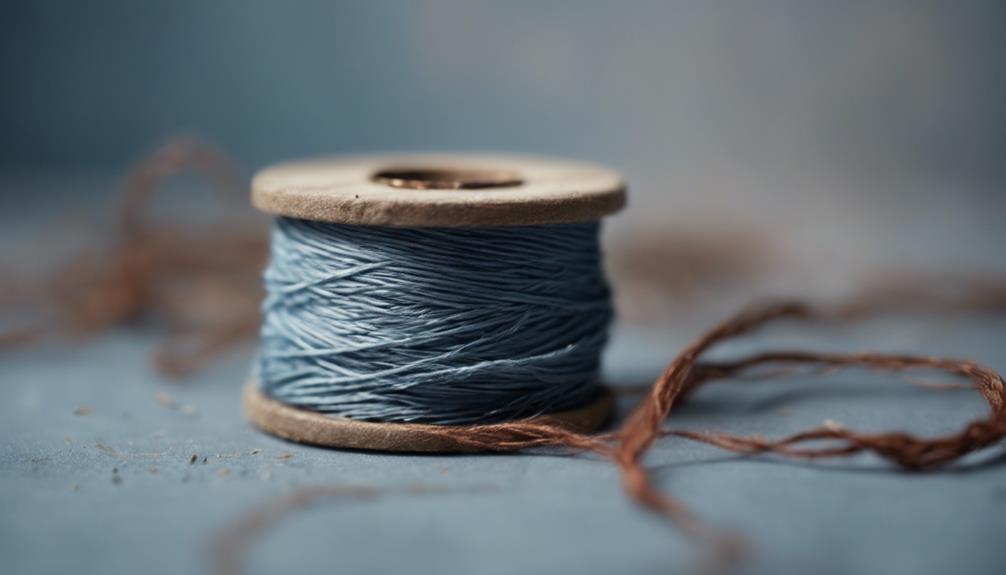
While melange fabric has its advantages, you'll also encounter some drawbacks, including inconsistencies in color variation due to the blending of colored fibers. This can lead to slight variations in shade, making it challenging to achieve precision in color matching. Additionally, durability concerns may arise with melange fabric, especially in heavily used or washed items.
Some of the key disadvantages of melange fabric include:
- Limited fiber choices, which can restrict the options available for creating melange fabrics with specific properties
- Uneven dye penetration, which can affect the overall appearance of the fabric
- Camouflaging effects for stains and wear, but with limited ability to conceal imperfections
As you work with melange fabric, it's vital to be aware of these limitations to make sure that you're using the fabric effectively. By understanding the disadvantages of melange, you can make informed decisions about its application and create high-quality textiles that meet your needs.
Uses of Melange Fabric
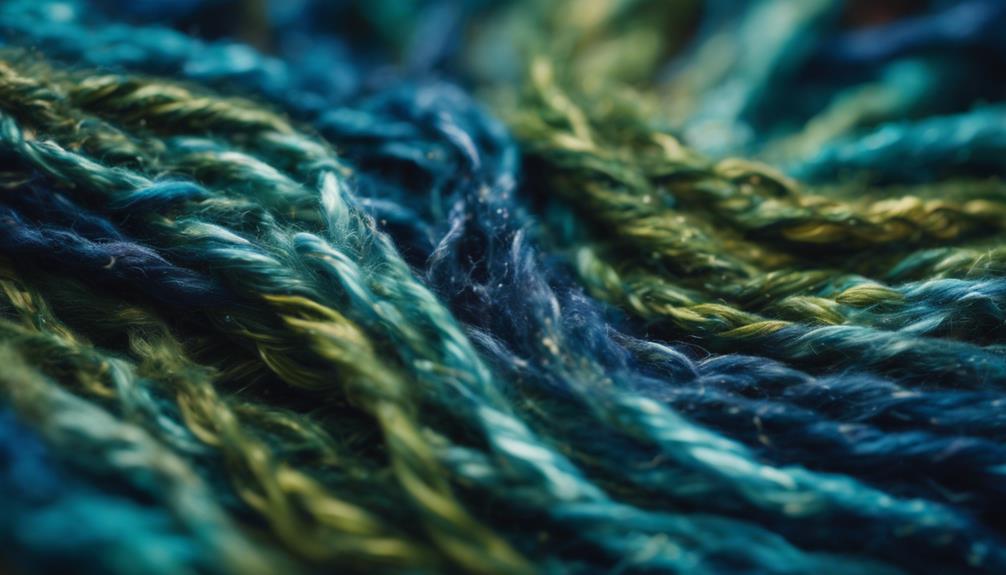
As you explore the uses of melange fabric, you'll find that it's a versatile material with a range of applications. From fashion apparel to home decor essentials, melange fabric's unique texture and appearance make it an ideal choice for creating both functional and stylish products.
Whether you're looking to create statement pieces or everyday essentials, melange fabric's diverse uses are sure to inspire your creativity.
Fashion Apparel Applications
You'll often find melange fabric featured prominently in your favorite fashion apparel, from trendy knitwear and activewear to stylish outerwear, thanks to its unique blend of style, comfort, and practicality. Its versatility makes it suitable for both summer and winter wear, making it a popular choice among fashion designers and enthusiasts alike.
Melange fabric's unique heathered appearance adds a trendy and stylish touch to clothing items, making it a staple in many fashion collections. Additionally, its soft and comfortable feel makes it a popular choice for various clothing pieces.
Some of the key benefits of melange fabric in fashion apparel applications include:
- Its ability to camouflage stains and wear, enhancing its practicality in everyday clothing
- Its soft and comfortable feel, making it ideal for clothing pieces that require frequent wear
- Its versatility, offering options for both summer and winter wear
Home Decor Essentials
Bring warmth and texture to your living space by incorporating melange fabric into your home decor essentials. You can add a touch of sophistication to your home with melange fabric's unique texture and appearance. It's commonly used in curtains, throw pillows, and upholstery, adding depth and visual interest to your interior design.
The softness and comfort of melange textiles make them ideal for creating cozy and inviting spaces within your home. From duvet covers to tablecloths, melange fabric offers a wide range of options for adding a touch of elegance to various home decor items.
The versatility of melange fabric makes it a popular choice for creating stylish and modern home decor pieces that elevate the overall aesthetic of your living space. By incorporating melange fabric into your home decor, you can create a warm and inviting atmosphere that's perfect for relaxing and entertaining.
With its unique texture and appearance, melange fabric is sure to become a staple in your home decor essentials.
Types of Melange Fabrics

With diverse material blends at their core, melange fabrics branch out into distinct categories, each with its unique set of characteristics. As you explore the world of melange fabrics, you'll discover a range of types that cater to different needs and preferences.
Some of the most notable types of melange fabrics include:
- Knit melange: A soft, stretchy fabric ideal for casual wear and knitwear.
- Viscose melange: A silk-like fabric with a smooth, lustrous texture, often used in high-end fashion.
- Performance melange: A high-tech fabric designed for activewear, offering moisture-wicking properties and breathability.
These types of melange fabrics are just a few examples of the many options available. By understanding the characteristics of each, you can make informed choices for your specific needs, whether it's for casual wear, high-fashion garments, or activewear.
With melange fabrics, the possibilities are endless, and the right choice can elevate your wardrobe or product line.
Care and Maintenance
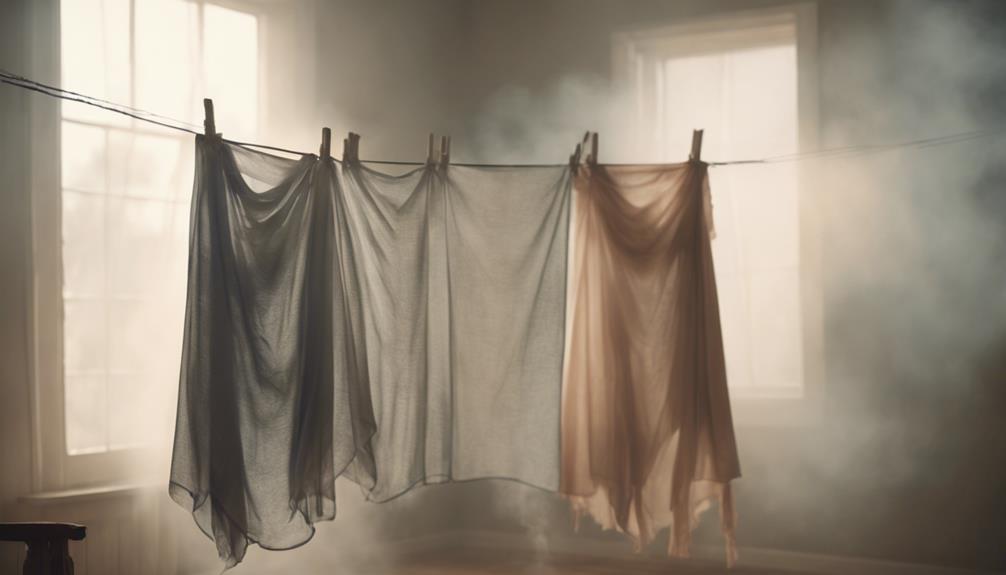
Exploring the world of melange fabrics requires a thorough understanding of the importance of proper care and maintenance to extend the life of your garments and textiles.
You'll need to learn how to wash, store, and iron your melange fabrics correctly to preserve their unique texture and appearance.
Washing Melange Fabric
To keep your melange fabric looking its best, wash it in cold water to prevent color fading or bleeding. This is essential to maintaining the fabric's vibrant colors and soft texture.
When washing your melange fabric, there are a few key things to keep in mind:
- Avoid using bleach or harsh detergents that can damage the fibers of melange fabric.
- Wash your melange fabric inside out to preserve the heathered appearance.
- Avoid using a dryer and instead air dry your melange fabric to maintain its softness and texture.
Additionally, if you need to remove wrinkles from your melange fabric, steaming or ironing on a low heat setting can be effective.
Storing Melange Correctly
When not in use, store your melange fabric in a cool, dry place away from direct sunlight to maintain its vibrant colors and soft texture. This will help prevent fading and preserve the fabric's original quality.
Avoid hanging melange garments for extended periods, as this can cause stretching or misshaping. Instead, use breathable storage containers or fabric bags to safeguard your melange textiles from dust and moisture.
Keep them away from strong odors or chemicals, which can alter their original scent and quality. To preserve the fabric's texture and prevent creases, rotate your stored melange items periodically. This ensures even airing and prevents the growth of mold or mildew.
Ironing Melange Safely
You'll need to take special care when ironing your melange fabric to preserve its unique texture and color. This fabric requires gentle treatment to maintain its heathered appearance and color vibrancy. When ironing, make sure to follow some essential guidelines to avoid damaging your fabric.
Here are some key tips to keep in mind:
- Iron your melange fabric on low to medium heat settings to prevent damage to the fibers.
- Use a pressing cloth to protect the texture and color of your fabric.
- Avoid using steam directly on melange fabric, as it can cause uneven dye absorption.
Additionally, always check the care label on your garment for specific ironing instructions for melange fabric.
As a general rule, it's best to gently iron your melange fabric inside out to maintain its appearance.
Is Melange Fabric Sustainable?

Melange fabric, often perceived as a stylish and versatile textile, is slowly but surely gaining recognition for its potential to be a sustainable choice. When produced using recycled fibers from fabric waste, melange fabric can be a sustainable option.
Advanced spinning systems like Siro and compact-Siro are adopted for sustainable melange yarn production. By blending short, lumpy recycled fibers with virgin fibers, you're contributing to eco-friendly textile manufacturing. Essential production methods are vital for sustainable melange fabric manufacturing.
It's heartening to see sustainable yarn production using recycled fibers gaining traction in the textile industry. As you explore the world of melange fabric, you'll discover that it's not just about aesthetics; it's about making conscious choices for the planet. By choosing melange fabric produced sustainably, you're supporting eco-friendly practices that benefit the environment.
Frequently Asked Questions
What Is Melange in Textiles?
You're wondering what melange in textiles is? Well, it's a fabric created by blending different colored fibers, giving a heathered effect. You'll love its unique, subtle color variations that add depth and texture to your favorite clothing items!
What Is the Melange Effect of Fabric?
Imagine watching a sunset, where hues blend seamlessly together – that's the melange effect in fabric. You'll notice a unique, heathered appearance with subtle color variations, adding depth and richness to the fabric's texture, making it a stylish addition to any garment or textile.
What Does Melange Mean in Clothing?
You might wonder, what does "melange" mean in clothing? It's French for "mixture", referring to the blend of different colored fibers that creates a unique, heathered appearance in fabrics, adding depth and visual interest to your garments.
What Is the Difference Between Heather and Melange?
You're wondering what sets heather and melange fabrics apart. Here's the deal: heather fabric blends colored fibers before spinning, while melange dyes blended fibers after spinning, resulting in distinct, varied color palettes and textures.
What Type of Fabric is Best for Carhartt Jackets, Such as Melange Fabric?
When choosing the best fabric for Carhartt jackets, such as Melange fabric, it’s important to consider durability and ease of care. Melange fabric offers a unique textured appearance and is usually a blend of different fibers, making it important to properly wash Carhartt jackets made from this material to ensure longevity.
Conclusion
As you now know, melange fabric is a versatile and sustainable textile that has evolved over time.
To illustrate its adaptability, consider a woven melange fabric that resembles a rich tapestry, where different fibers blend together in harmony, much like a skilled orchestra performing in perfect harmony.
With its numerous benefits and applications, it's no wonder melange fabric has become a staple in the textile industry, and its popularity is expected to continue to grow in the coming years.



